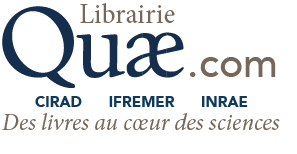Towards pesticide-free agriculture
Research and innovations in a future crop protection paradigm
Livre papier 39,00 €
Livre papier 35,00 €
Hervé Guyomard, Christian Huyghe, Jean-Louis Peyraud, Jean Boiffin, Bernard Coudurier, François Jeuland, Nicolas Urruty
Livre papier 45,00 €
Livre papier 39,60 €
Livre papier 26,00 €
Livre papier 35,00 €
Livre papier 39,00 €
Livre papier 36,00 €
Livre papier 22,00 €
Livre papier 36,00 €
Livre papier 35,00 €
Livre papier 25,00 €
Livre papier 30,00 €
Livre papier 49,00 €
Livre papier 35,00 €
Livre papier 35,00 €
Livre papier 32,00 €
Livre papier 28,00 €
Alain Kondjoyan, Catherine Renard, Patrice Dole, Laurence Fournaison, Hong-Minh Hoang-Le, Yves Le Loir, Caroline Pénicaud, Monique Zagorec, François Zuber
Livre papier 17,00 €
Livre papier 39,00 €
Livre papier 29,00 €
Caractéristiques
Langue(s) : Anglais
Éditeur : Éditions Quae
Édition : 1re édition
Collection : Synthèses
Publication : 4 novembre 2024
Référence Livre papier : 02972
Référence eBook [PDF] : 02972NUM
Référence eBook [ePub] : 02972EPB
EAN13 Livre papier : 9782759239948
EAN13 eBook [PDF] : 9782759239955
EAN13 eBook [ePub] : 9782759239962
DOI eBook [PDF] : 10.35690/978-2-7592-3995-5
Intérieur : Couleur
Format (en mm) Livre papier : 160 x 240
Nombre de pages Livre papier : 224
Nombre de pages eBook [PDF] : 224
Poids (en grammes) : 520
Taille(s) : 13,6 Mo (PDF), 3,56 Mo (ePub)



































